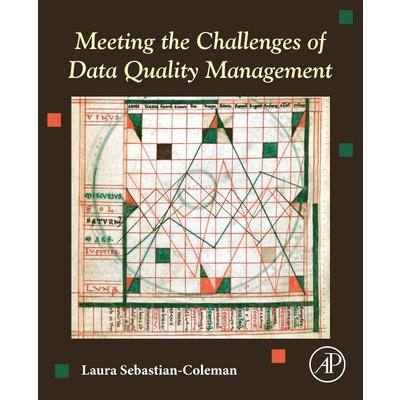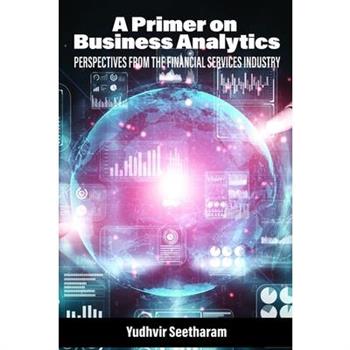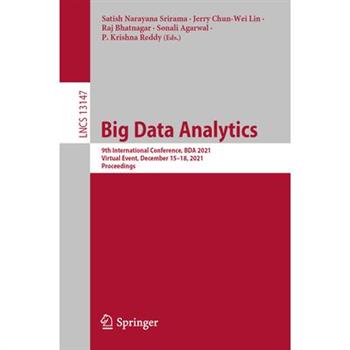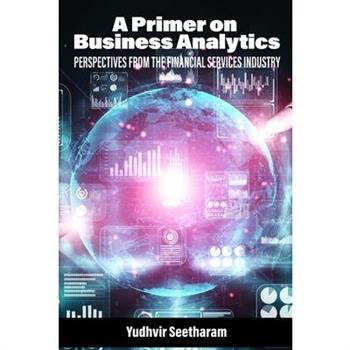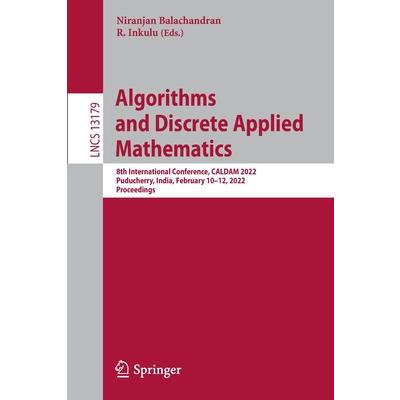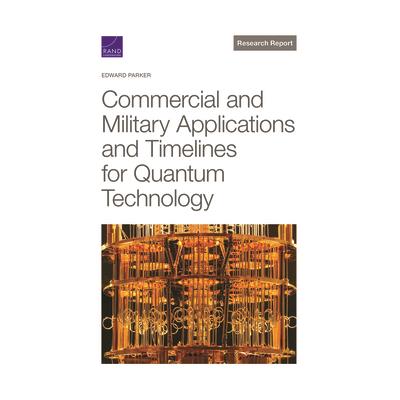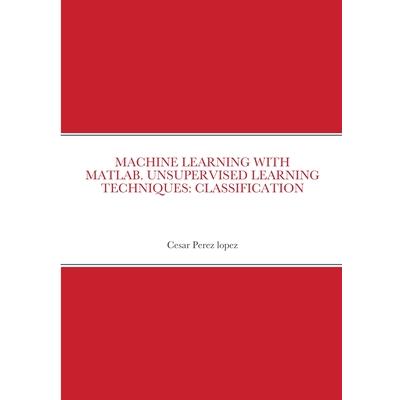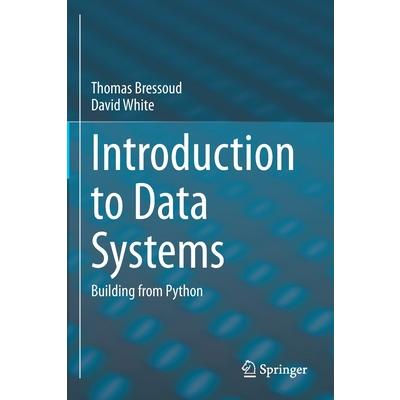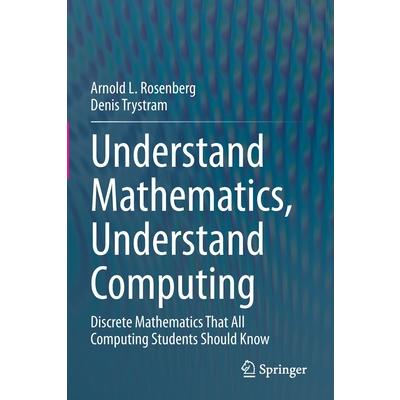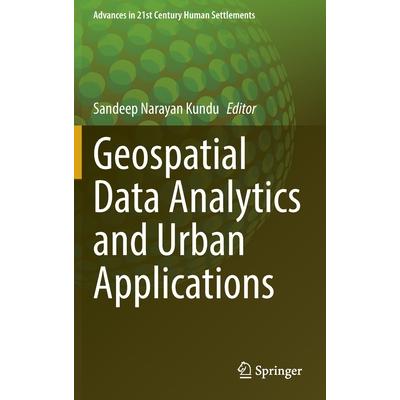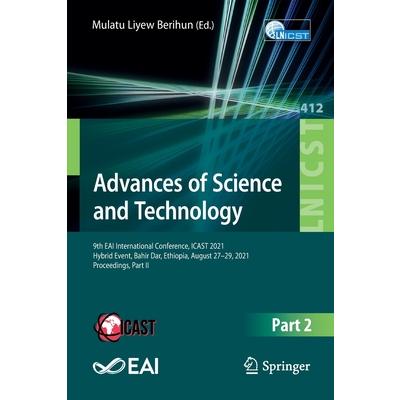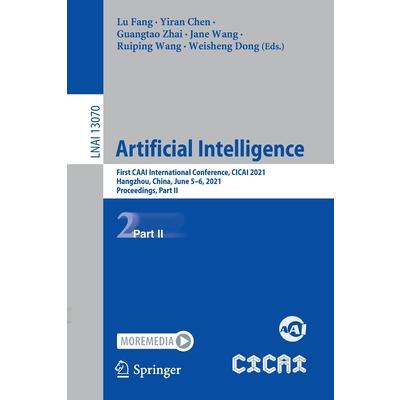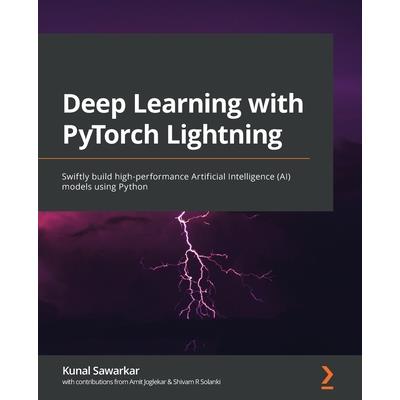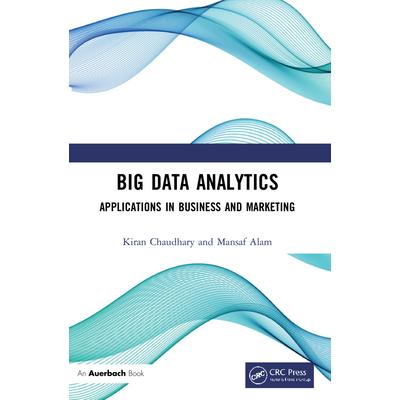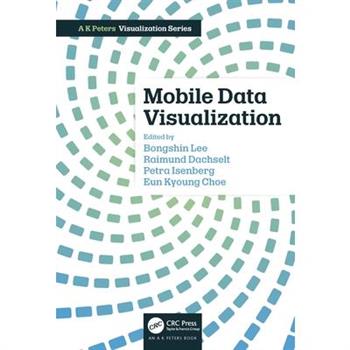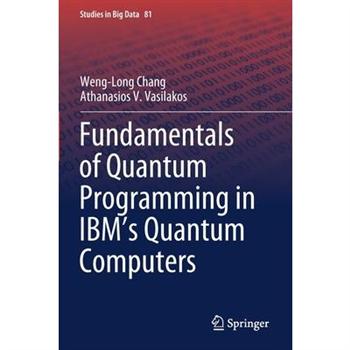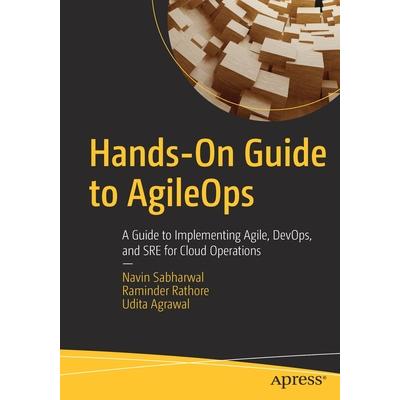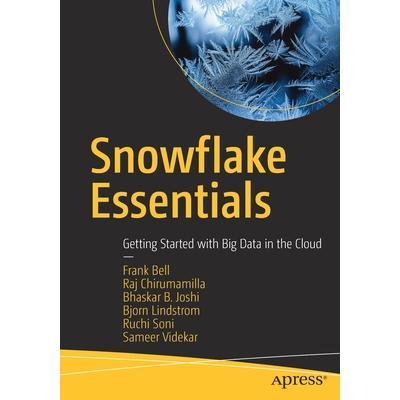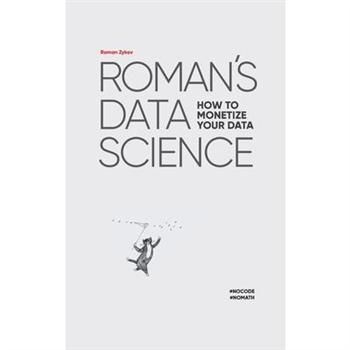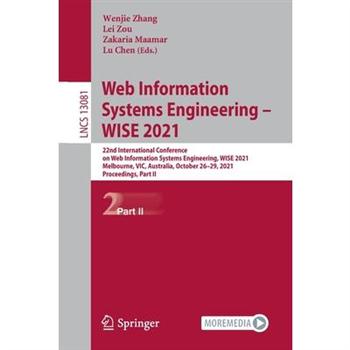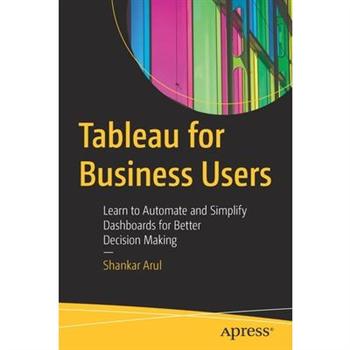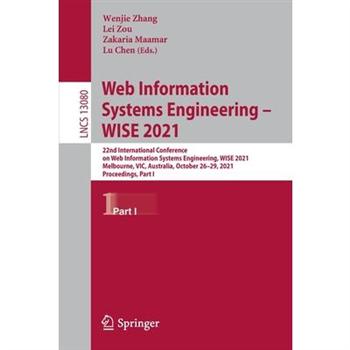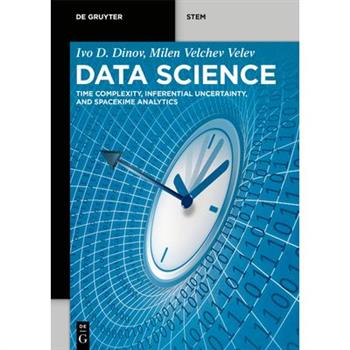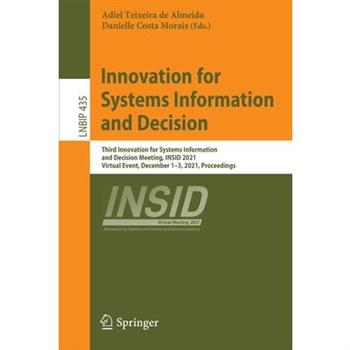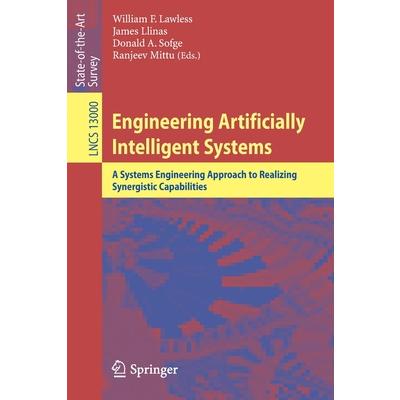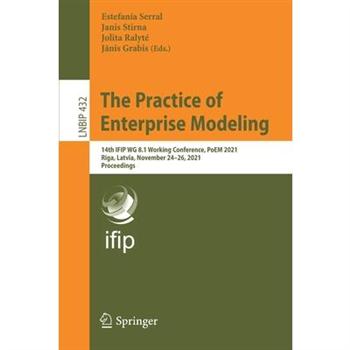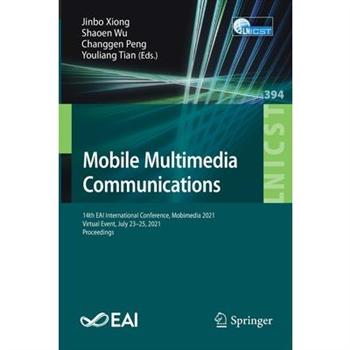Meeting the Challenges of Data Quality Management
Meeting the Challenges of Data Quality Management outlines the foundational concepts of data quality management and its challenges. The book enables data management professionals to help their organizations get more value from data by addressing the five challenges of data quality management: the meaning challenge (recognizing how data represents reality), the process/quality challenge (creating high-quality data by design), the people challenge (building data literacy), the technical challenge (enabling organizational data to be accessed and used, as well as protected), and the accountability challenge (ensuring organizational leadership treats data as an asset). Organizations that fail to meet these challenges get less value from their data than organizations that address them directly. The book describes core data quality management capabilities and introduces new and experienced DQ practitioners to practical techniques for getting value from activities such as data profiling, DQ monitoring and DQ reporting. It extends these ideas to the management of data quality within big data environments. This book will appeal to data quality and data management professionals, especially those involved with data governance, across a wide range of industries, as well as academic and government organizations. Readership extends to people higher up the organizational ladder (chief data officers, data strategists, analytics leaders) and in different parts of the organization (finance professionals, operations managers, IT leaders) who want to leverage their data and their organizational capabilities (people, processes, technology) to drive value and gain competitive advantage. This will be a key reference for graduate students in computer science programs which normally have a limited focus on the data itself and where data quality management is an often-overlooked aspect of data management courses.
Microsoft Power Bi for Dummies
Reveal the insights behind your company's data with Microsoft Power BI Microsoft Power BI allows intuitive access to data that can power intelligent business decisions and insightful strategies. The question is, do you have the Power BI skills to make your organization's numbers spill their secrets? In Microsoft Power BI For Dummies, expert lecturer, consultant, and author Jack Hyman delivers a start-to-finish guide to applying the Power BI platform to your own firm's data. You'll discover how to start exploring your data sources, build data models, visualize your results, and create compelling reports that motivate decisive action. Tackle the basics of Microsoft Power BI and, when you're done with that, move on to advanced functions like accessing data with DAX and app integrations Guide your organization's direction and decisions with rock-solid conclusions based on real-world data Impress your bosses and confidently lead your direct reports with exciting insights drawn from Power BI's useful visualization tools It's one thing for your company to have data at its disposal. It's another thing entirely to know what to do with it. Microsoft Power BI For Dummies is the straightforward blueprint you need to apply one of the most powerful business intelligence tools on the market to your firm's existing data.
Classification Made Relevant
Classification Made Relevant: How Scientists Build and Use Classifications and Ontologies explains how classifications and ontologies are designed and used to analyze scientific information. The book presents the fundamentals of classification, leading up to a description of how computer scientists use object-oriented programming languages to model classifications and ontologies. Numerous examples are chosen from the Classification of Life, the Periodic Table of the Elements, and the symmetry relationships contained within the Classification Theorem of Finite Simple Groups. When these three classifications are tied together, they provide a relational hierarchy connecting all of the natural sciences. The book's chapters introduce and describe general concepts that can be understood by any intelligent reader. With each new concept, they follow practical examples selected from various scientific disciplines. In these cases, technical points and specialized vocabulary are linked to glossary items where the item is clarified and expanded.
Personalized Machine Learning
Every day we interact with machine learning systems offering individualized predictions for our entertainment, social connections, purchases, or health. These involve several modalities of data, from sequences of clicks to text, images, and social interactions. This book introduces common principles and methods that underpin the design of personalized predictive models for a variety of settings and modalities. The book begins by revising 'traditional' machine learning models, focusing on adapting them to settings involving user data, then presents techniques based on advanced principles such as matrix factorization, deep learning, and generative modeling, and concludes with a detailed study of the consequences and risks of deploying personalized predictive systems. A series of case studies in domains ranging from e-commerce to health plus hands-on projects and code examples will give readers understanding and experience with large-scale real-world datasets and the ability to design models and systems for a wide range of applications.
A Primer on Business Analytics
This book will provide a comprehensive overview of business analytics, for those who have either a technical background (quantitative methods) or a practitioner business background. Business analytics, in the context of the 4th Industrial Revolution, is the "new normal" for businesses that operate in this digital age. This book provides a comprehensive primer and overview of the field (and related fields such as Business Intelligence and Data Science). It will discuss the field as it applies to financial institutions, with some minor departures to other industries. Readers will gain understanding and insight into the field of data science, including traditional as well as emerging techniques. Further, many chapters are dedicated to the establishment of a data-driven team - from executive buy-in and corporate governance to managing and quantifying the return of data-driven projects.
Big Data Analytics
This book constitutes the proceedings of the 8th International Conference on Big Data Analytics, BDA 2021, which took place during December 2021. Due to COVID-19 pandemic the conference was held virtually. The 16 full and 3 short papers included in this volume were carefully reviewed and selected from 41 submissions. The contributions were organized in topical sections named as follows: medical and health applications; machine/deep learning; IoTs, sensors, and networks; fundamentation; pattern mining and data analytics.
A Primer on Business Analytics
This book will provide a comprehensive overview of business analytics, for those who have either a technical background (quantitative methods) or a practitioner business background. Business analytics, in the context of the 4th Industrial Revolution, is the "new normal" for businesses that operate in this digital age. This book provides a comprehensive primer and overview of the field (and related fields such as Business Intelligence and Data Science). It will discuss the field as it applies to financial institutions, with some minor departures to other industries. Readers will gain understanding and insight into the field of data science, including traditional as well as emerging techniques. Further, many chapters are dedicated to the establishment of a data-driven team - from executive buy-in and corporate governance to managing and quantifying the return of data-driven projects.
Advanced Hybrid Information Processing
This two-volume set constitutes the post-conference proceedings of the 5th EAI International Conference on Advanced Hybrid Information Processing, ADHIP 2021, held in October 2021. Due to COVID-19 the conference was held virtually. The 94 papers presented were selected from 254 submissions and focus on theory and application of hybrid information processing technology for smarter and more effective research and application. The theme of ADHIP 2020 was "Social hybrid data processing". The papers are named in topical sections as follows: Intelligent algorithms in complex environment; AI system research and model design; Method research on Internet of Things technology; Research and analysis with intelligent education.
Advanced Hybrid Information Processing
This two-volume set constitutes the post-conference proceedings of the 5th EAI International Conference on Advanced Hybrid Information Processing, ADHIP 2021, held in October 2021. Due to COVID-19 the conference was held virtually. The 94 papers presented were selected from 254 submissions and focus on theory and application of hybrid information processing technology for smarter and more effective research and application. The theme of ADHIP 2020 was "Social hybrid data processing". The papers are named in topical sections as follows: Intelligent algorithms in complex environment; AI system research and model design; Method research on Internet of Things technology; Research and analysis with intelligent education.
Algorithms and Discrete Applied Mathematics
This book constitutes the proceedings of the 8th International Conference on Algorithms and Discrete Applied Mathematics, CALDAM 2022, which was held in Puducherry, India, during February 10-12, 2022. The 24 papers presented in this volume were carefully reviewed and selected from 80 submissions. The papers were organized in topical sections named: graph theory, graph algorithms, computational geometry, algorithms and optimization.
Practical Aspects of Declarative Languages
This book constitutes the refereed proceedings of the 24th International Conference on Practical Aspects of Declarative Languages, PADL 2022, held in Philadelphia, PA, USA, during January 17-18, 2022. The 9 full papers and 4 short papers included in this book were carefully reviewed and selected from 22 submissions. They were organized in topical sections as follows: answer set programming; functional programming; languages, methods and tools; and declarative solutions.
Commercial and Military Applications and Timelines for Quantum Technology
This report provides an overview of the current state of quantum technology and its potential commercial and military applications, such as data encryption and extremely precise sensors. The author discusses each of the three major categories of quantum technology: quantum sensing, quantum communication, and quantum computing.
Machine Learning with Matlab. Unsupervised Learning Techniques
The availability of large volumes of data and the generalized use of computer tools has transformed research and data analysis, orienting it towards certain specialized techniques encompassed under the generic name of Analytics that includes Multivariate Data Analysis (MDA), Machine Learning, Data Mining and other Business Intelligence techniques. Machine learning uses two types of techniques: Supervised Learning techniques (predictive techniques), which trains a model on known input and output data so that it can predict future outputs, and Supervised Learning techniques (descriptive techniques), which finds hidden patterns or intrinsic structures in input data. Unsupervised learning techniques finds hidden patterns or intrinsic structures in data. It is used to draw inferences from datasets consisting of input data without labeled responses. Clustering is the most common descriptive technique. It is used for exploratory data analysis to find hidden patterns or groupings in data. Applications for clustering include gene sequence analysis, market research, and object recognition. This book develops classification unsupervised learning techniques
Solutions Architect’s Handbook - Second Edition
Third edition out now with coverage on Generative AI, clean architecture, edge computing, and moreKey Features: Turn business needs into end-to-end technical architectures with this practical guideAssess and overcome various challenges while updating or modernizing legacy applicationsFuture-proof your architecture with IoT, machine learning, and quantum computingBook Description: Becoming a solutions architect requires a hands-on approach, and this edition of the Solutions Architect's Handbook brings exactly that. This handbook will teach you how to create robust, scalable, and fault-tolerant solutions and next-generation architecture designs in a cloud environment. It will also help you build effective product strategies for your business and implement them from start to finish.This new edition features additional chapters on disruptive technologies, such as Internet of Things (IoT), quantum computing, data engineering, and machine learning. It also includes updated discussions on cloud-native architecture, blockchain data storage, and mainframe modernization with public cloud.The Solutions Architect's Handbook provides an understanding of solution architecture and how it fits into an agile enterprise environment. It will take you through the journey of solution architecture design by providing detailed knowledge of design pillars, advanced design patterns, anti-patterns, and the cloud-native aspects of modern software design.By the end of this handbook, you'll have learned the techniques needed to create efficient architecture designs that meet your business requirements.What You Will Learn: Explore the various roles of a solutions architect in the enterprise landscapeImplement key design principles and patterns to build high-performance cost-effective solutionsChoose the best strategies to secure your architectures and increase their availabilityModernize legacy applications with the help of cloud integrationUnderstand how big data processing, machine learning, and IoT fit into modern architectureIntegrate a DevOps mindset to promote collaboration, increase operational efficiency, and streamline productionWho this book is for: This book is for software developers, system engineers, DevOps engineers, architects, and team leaders who already work in the IT industry and aspire to become solutions architect professionals.Existing solutions architects who want to expand their skillset or get a better understanding of new technologies will also learn valuable new skills.To get started, you'll need a good understanding of the real-world software development process and general programming experience in any language.
Introduction to Data Systems
Encompassing a broad range of forms and sources of data, this textbook introduces data systems through a progressive presentation. Introduction to Data Systems covers data acquisition starting with local files, then progresses to data acquired from relational databases, from REST APIs and through web scraping. It teaches data forms/formats from tidy data to relationally defined sets of tables to hierarchical structure like XML and JSON using data models to convey the structure, operations, and constraints of each data form.The starting point of the book is a foundation in Python programming found in introductory computer science classes or short courses on the language, and so does not require prerequisites of data structures, algorithms, or other courses. This makes the material accessible to students early in their educational career and equips them with understanding and skills that can be applied in computer science, data science/data analytics, and information technology programs as well as for internships and research experiences. This book is accessible to a wide variety of students. By drawing together content normally spread across upper level computer science courses, it offers a single source providing the essentials for data science practitioners. In our increasingly data-centric world, students from all domains will benefit from the "data-aptitude" built by the material in this book.
Geospatial Data Analytics and Urban Applications
This book highlights advanced applications of geospatial data analytics to address real-world issues in urban society. With a connected world, we are generating spatial at unprecedented rates which can be harnessed for insightful analytics which define the way we analyze past events and define the future directions. This book is an anthology of applications of spatial data and analytics performed on them for gaining insights which can be used for problem solving in an urban setting. Each chapter is contributed by spatially aware data scientists in the making who present spatial perspectives drawn on spatial big data. The book shall benefit mature researchers and student alike to discourse a variety of urban applications which display the use of machine learning algorithms on spatial big data for real-world problem solving.
Advances of Science and Technology
This two-volume set of LNICST 411 and 412 constitutes the refereed post-conference proceedings of the 9th International Conference on Advancement of Science and Technology, ICAST 2021, which took place in August 2021. Due to COVID-19 pandemic the conference was held virtually. The 80 revised full papers were carefully reviewed and selected from 202 submissions. The papers present economic and technologic developments in modern societies in 7 tracks: Chemical, Food and Bioprocess Engineering; Electrical and Electronics Engineering; ICT, Software and Hardware Engineering; Civil, Water Resources, and Environmental Engineering ICT; Mechanical and Industrial Engineering; Material Science and Engineering; Energy Science, Engineering and Policy.
Enterprise Architecture Function
1. Introduction.- 2. Architecture Function Pattern Language.- 3. Architecture Function: Context.- 4. Architecture Function: Challenge.- 5. Architecture Function: Constitution.- 6. Pattern Catalog.
Artificial Intelligence
This two-volume set LNCS 13069-13070 constitutes selected papers presented at the First CAAI International Conference on Artificial Intelligence, held in Hangzhou, China, in June 2021. Due to the COVID-19 pandemic the conference was partially held online. The 105 papers were thoroughly reviewed and selected from 307 qualified submissions. The papers are organized in topical sections on applications of AI; computer vision; data mining; explainability, understandability, and verifiability of AI; machine learning; natural language processing; robotics; and other AI related topics.
Deep Learning with PyTorch Lightning
Build, train, deploy, and scale deep learning models quickly and accurately, improving your productivity using the lightweight PyTorch WrapperKey Features: Become well-versed with PyTorch Lightning architecture and learn how it can be implemented in various industry domainsSpeed up your research using PyTorch Lightning by creating new loss functions, networks, and architecturesTrain and build new algorithms for massive data using distributed trainingBook Description: PyTorch Lightning lets researchers build their own Deep Learning (DL) models without having to worry about the boilerplate. With the help of this book, you'll be able to maximize productivity for DL projects while ensuring full flexibility from model formulation through to implementation. You'll take a hands-on approach to implementing PyTorch Lightning models to get up to speed in no time.You'll start by learning how to configure PyTorch Lightning on a cloud platform, understand the architectural components, and explore how they are configured to build various industry solutions. Next, you'll build a network and application from scratch and see how you can expand it based on your specific needs, beyond what the framework can provide. The book also demonstrates how to implement out-of-box capabilities to build and train Self-Supervised Learning, semi-supervised learning, and time series models using PyTorch Lightning. As you advance, you'll discover how generative adversarial networks (GANs) work. Finally, you'll work with deployment-ready applications, focusing on faster performance and scaling, model scoring on massive volumes of data, and model debugging.By the end of this PyTorch book, you'll have developed the knowledge and skills necessary to build and deploy your own scalable DL applications using PyTorch Lightning.What You Will Learn: Customize models that are built for different datasets, model architectures, and optimizersUnderstand how a variety of Deep Learning models from image recognition and time series to GANs, semi-supervised and self-supervised models can be builtUse out-of-the-box model architectures and pre-trained models using transfer learningRun and tune DL models in a multi-GPU environment using mixed-mode precisionsExplore techniques for model scoring on massive workloadsDiscover troubleshooting techniques while debugging DL modelsWho this book is for: This deep learning book is for citizen data scientists and expert data scientists transitioning from other frameworks to PyTorch Lightning. This book will also be useful for deep learning researchers who are just getting started with coding for deep learning models using PyTorch Lightning. Working knowledge of Python programming and an intermediate-level understanding of statistics and deep learning fundamentals is expected.
Big Data Analytics
Big Data Analytics: Applications in Business and Marketing explores the concepts and applications related to marketing and business as well as future research directions. It also examines how this emerging field could be extended to performance management and decision-making. Investment in business and marketing analytics can create value through proper allocation of resources and resource orchestration process. The use of data analytics tools can be used to diagnose and improve performance. The book is divided into five parts. The first part introduces data science, big data, and data analytics. The second part focuses on applications of business analytics including: Big data analytics and algorithm Market basket analysis Anticipating consumer purchase behavior Variation in shopping patterns Big data analytics for market intelligence The third part looks at business intelligence and features an evaluation study of churn prediction models for business Intelligence. The fourth part of the book examines analytics for marketing decision-making and the roles of big data analytics for market intelligence and of consumer behavior. The book concludes with digital marketing, marketing by consumer analytics, web analytics for digital marketing, and smart retailing. This book covers the concepts, applications and research trends of marketing and business analytics with the aim of helping organizations increase profitability by improving decision-making through data analytics.
Mobile Data Visualization
Mobile Data Visualization is about facilitating access to and understanding of data on mobile devices. Wearable trackers, mobile phones, and tablets are used by millions of people each day to read weather maps, financial charts, or personal health meters. What is required to create e-ffective visualizations for mobile devices? This book introduces key concepts of mobile data visualization and discusses opportunities and challenges from both research and practical perspectives.Mobile Data Visualization is the first book to provide an overview of how to e-ffectively visualize, analyze, and communicate data on mobile devices. Drawing from the expertise, research, and experience of an international range of academics and practitioners from across the domains of Visualization, Human Computer Interaction, and Ubiquitous Computing, the book explores the challenges of mobile visualization and explains how it diff-ers from traditional data visualization. It highlights opportunities for reaching new audiences with engaging, interactive, and compelling mobile content.In nine chapters, this book presents interesting perspectives on mobile data visualization including: how to characterize and classify mobile visualizations; how to interact with them while on the go and with limited attention spans; how to adapt them to various mobile contexts; specific methods on how to design and evaluate them; reflections on privacy, ethical and other challenges, as well as an outlook to a future of ubiquitous visualization. This accessible book is a valuable and rich resource for visualization designers, practitioners, researchers, and students alike.
Mobile Data Visualization
Mobile Data Visualization is about facilitating access to and understanding of data on mobile devices. Wearable trackers, mobile phones, and tablets are used by millions of people each day to read weather maps, financial charts, or personal health meters. What is required to create e-ffective visualizations for mobile devices? This book introduces key concepts of mobile data visualization and discusses opportunities and challenges from both research and practical perspectives.Mobile Data Visualization is the first book to provide an overview of how to e-ffectively visualize, analyze, and communicate data on mobile devices. Drawing from the expertise, research, and experience of an international range of academics and practitioners from across the domains of Visualization, Human Computer Interaction, and Ubiquitous Computing, the book explores the challenges of mobile visualization and explains how it diff-ers from traditional data visualization. It highlights opportunities for reaching new audiences with engaging, interactive, and compelling mobile content.In nine chapters, this book presents interesting perspectives on mobile data visualization including: how to characterize and classify mobile visualizations; how to interact with them while on the go and with limited attention spans; how to adapt them to various mobile contexts; specific methods on how to design and evaluate them; reflections on privacy, ethical and other challenges, as well as an outlook to a future of ubiquitous visualization. This accessible book is a valuable and rich resource for visualization designers, practitioners, researchers, and students alike.
Fundamentals of Quantum Programming in IBM’s Quantum Computers
This textbook introduces major topics that include quantum bits, superposition, entanglement, logic gates, quantum search algorithm, quantum Fourier transform, inverse quantum Fourier transform, Shor's order-finding algorithm and phase estimation. Everyone can write algorithms and programs in the cloud making using IBM's quantum computers that support IBM Q Experience which contains the composer, open quantum assembly language, simulators and real quantum devices. Furthermore, this book teaches you how to use open quantum assembly language to write quantum programs for dealing with complex problems. Through numerous examples and exercises, readers will learn how to write a quantum program with open quantum assembly language for solving any problem from start to complete. This book includes six main chapters: -Quantum Bits and Quantum Gates-learn what quantum bits are, how to declare and measure them, what quantum gates are and how they work on a simulator or a real device in the cloud. -Boolean Algebra and its Applications-learn how to decompose CCNOT gate into six CNOT gates and nine gates of one bit and how to use NOT gates, CNOT gates and CCNOT gates to implement logic operations including NOT, OR, AND, NOR, NAND, Exclusive-OR (XOR) and Exclusive-NOR (XNOR). -Quantum Search Algorithm and its Applications-learn core concepts of quantum search algorithm and how to write quantum programs to implement core concepts of quantum search algorithm for solving two famous NP-complete problems that are the satisfiability problem in n Boolean variables and m clauses and the clique problem in a graph with n vertices and q edges. -Quantum Fourier Transform and its Applications-learn core concepts of quantum Fourier transform and inverse quantum Fourier transform and how to write quantum programs to implement them for solving two real applications that are to compute the period and the frequency of two given oracular functions. -Order-Finding and Factoring-learn core concepts of Shor's order-finding algorithm and how to write quantum programs to implement Shor's order-finding algorithm for completing the prime factorization to 15. Phase Estimation and its Applications-learn core concepts of phase estimation and quantum counting and how to write quantum programs to implement them to compute the number of solution(s) in the independent set problem in a graph with two vertices and one edge.
Hands-On Guide to AgileOps
Discover the best practices for transforming cloud and infrastructure operations by using Agile, Scrum, Kanban, Scrumban and Spotify models. This book will help you gain an in-depth understanding of these processes so that you can apply them to your own work. The book begins by offering an overview of current processes and methods used in IT Operations using ITIL and IT4IT. The Authors provide a background of the Agile, Scrum, Kanban, SaFe, Scrumban, and Spotify models used in software development. You'll then gain in-depth guidance and best practices to implement Agile in the Operations world. You'll see how Agile, Site Reliability Engineering and DevOps work in tandem to provide the foundation for modern day infrastructure and cloud operations. The book also offers a comparison of various agile processes and their suitability to the infrastructure and cloud operations world. After completing this is hands-on guide, you'll know how to adopt Agile, DevOps and SRE and select the most suitable processes for your organization to achieve higher reliability, agility and lower costs while running cloud and infrastructure operations. What You Will LearnUnderstand how cloud computing and microservices architecture are changing operations dynamicsUnderstand ITIL, IT4IT, and LeanLearn how Site Reliability Engineering, Agile and DevOps work in tandemLeverage Agile, Scrum, Kanban, Scrumban, and Spotify models to run cloud operationsUse Site Reliability techniques along with Agile and DevOpsStudy the different agile frameworks (Spotify, SAFe, LeSS, DAD, Nexus), their purpose, benefits and implementation approaches.Learn a step-by-step process to identify and implement these frameworks in your organization Who This Book is For Infrastructure architects, DevOps architects, Agile practitioners, DevSecOps Experts, Product Managers/Scrum Masters, DevOps Engineers.
Snowflake Essentials
Understand the essentials of the Snowflake Database and the overall Snowflake Data Cloud. This book covers how Snowflake's architecture is different from prior on-premises and cloud databases. The authors also discuss, from an insider perspective, how Snowflake grew so fast to become the largest software IPO of all time.Snowflake was the first database made specifically to be optimized with a cloud architecture. This book helps you get started using Snowflake by first understanding its architecture and what separates it from other database platforms you may have used. You will learn about setting up users and accounts, and then creating database objects. You will know how to load data into Snowflake and query and analyze that data, including unstructured data such as data in XML and JSON formats. You will also learn about Snowflake's compute platform and the different data sharing options that are available. What YouWill LearnRun analytics in the Snowflake Data CloudCreate users and roles in SnowflakeSet up security in SnowflakeSet up resource monitors in SnowflakeSet up and optimize Snowflake ComputeLoad, unload, and query structured and unstructured data (JSON, XML) within SnowflakeUse Snowflake Data Sharing to share dataSet up a Snowflake Data ExchangeUse the Snowflake Data Marketplace Who This Book Is ForDatabase professionals or information technology professionals who want to move beyond traditional database technologies by learning Snowflake, a new and massively scalable cloud-based database solution
Oracle Database Administration
Oracle database administration requires a vast amount of information and an ability to perform a myriad of tasks--from installation to tuning to network troubleshooting to overall daily administration. Oracle provides many tools for performing these tasks; the trick is knowing what tool is right for the job, what commands you need to issue (and when), and what parameters and privileges you need to set. And, as every DBA knows, you need to know how do all this under pressure, while you face crisis after crisis. This book provides a concise reference to the enormous store of information an Oracle DBA needs every day (as well as what's needed only when disaster strikes). It's crammed full of quick-reference tables, task lists, and other summary material that both novice and expert DBAs will use time and time again. It covers the commands and operations new to Oracle8, but also provides Oracle7 information for sites still running earlier versions. Oracle Database Administration provides two types of material: DBA tasks--chapters summarizing how to perform critical DBA functions: installation, performance tuning, preventing data loss, networking, security and monitoring, auditing, query optimization, and the use of various Oracle tools and utilities DBA reference--chapters providing a quick reference to the Oracle instance and database, the initialization (INIT.ORA) parameters, the SQL statements commonly used by DBAs, the data dictionary tables, the system privileges and roles, and the SQL*Plus, Export, Import, and SQL*Loader syntax The book also includes a resource summary with references to additional books, Web sites, and other online and offline resources of special use to Oracle DBAs. Oracle Database Administration is the single essential reference you'll turn to again and again. If you must choose only one book to use at the office, keep at home, or carry to a site you're troubleshooting, this will be that book.
Enabling Technologies for the Successful Deployment of Industry 4.0
This book offers the latest research advances in the field of Industry 4.0, focusing on enabling technologies for its deployment in a comprehensive way. This book offers successful implementation of technologies such as artificial intelligence, augmented and virtual reality, autonomous and collaborative robots, cloud computing, and up-to-date guidelines. It investigates how the technologies and principles surrounding Industry 4.0 (e.g., interoperability, decentralized decisions, information transparency, etc.) serve as support for organizational routines and workers (and vice versa). Included are applications of technologies for different sectors and environments as well as for the supply chain management. It also offers a domestic and international mix of case studies that spotlight successes and failures. FeaturesProvides a historical review of Industry 4.0 and its rootsDiscusses the applications of technologies in different sectors and environments (e.g., public vs. private)Presents key enabling technologies for successful implementation in any industrial and service environmentOffers case studies of successes and failures to illustrate how to put theory into practiceInvestigates how technologies serve as support for organizational routines and workers
Data Science
The aim of this book is to provide an internationally respected collection of scientific research methods, technologies and applications in the area of data science. This book can prove useful to the researchers, professors, research students and practitioners as it reports novel research work on challenging topics in the area surrounding data science. In this book, some of the chapters are written in tutorial style concerning machine learning algorithms, data analysis, information design, infographics, relevant applications, etc. The book is structured as follows: - Part I: Data Science: Theory, Concepts, and AlgorithmsThis part comprises five chapters on data Science theory, concepts, techniques and algorithms. - Part II: Data Design and AnalysisThis part comprises five chapters on data design and analysis.- Part III: Applications and New Trends in Data ScienceThis part comprises four chapters on applications and new trends in data science.
Computational Intelligence in Data Science
This book constitutes the refereed post-conference proceedings of the Fourth IFIP TC 12 International Conference on Computational Intelligence in Data Science, ICCIDS 2021, held in Chennai, India, in March 2021. The 20 revised full papers presented were carefully reviewed and selected from 75 submissions. The papers cover topics such as computational intelligence for text analysis; computational intelligence for image and video analysis; blockchain and data science.
Roman’s Data Science How to monetize your data
An introduction to the field of data analysis written in jargon-free language that is not bogged down by programming code and mathematical formulas. It covers the most essential topics in the fields of data science, machine learning and business intelligence that you are likely to come across on a regular basis. The main goal is to help readers get the most out of their data, make business decisions and create information products - all without paying over the odds.In a career spanning over 20 years, the author has worked as a junior data analyst, headed up the analytics division of an $10-billion company and co-founded a recommendation systems startup. The text was edited by a professional journalist. It contains QR codes and links with links you can follow if you want a deeper understanding of the topics covered.
Web Information Systems Engineering - WISE 2021
This two-volume set constitutes the proceedings of the 22nd International Conference on Web Information Systems Engineering, WISE 2021, held in Melbourne, VIC, Australia, in October 2021.The 55 full, 29 short and 5 demo papers, plus 2 tutorials were carefully reviewed and selected from 229 submissions. The papers are organized in the following topical sections: Part I: BlockChain and Crowdsourcing; Database System and Workflow; Data Mining and Applications; Knowledge Graph and Entity Linking; Graph Neural Network; Graph Query; Social Network; Spatial and Temporal Data Analysis.Part II: Deep Learning (1), Deep Learning (2), Recommender Systems (1), Recommender Systems (2), Text Mining (1), Text Mining (2), Service Computing and Cloud Computing (1), Service Computing and Cloud Computing (2), Tutorial and Demo.
Tableau for Business Users
Learn Tableau by working through concrete examples and issues that you are likely to face in your day-to-day work. Author Shankar Arul starts by teaching you the fundamentals of data analytics before moving on to the core concepts of Tableau. You will learn how to create calculated fields, and about the currently available calculation functionalities in Tableau, including Basic Expressions, Level of Detail (LOD) Expressions, and Table Calculations. As the book progresses, you'll be walked through comparisons and trend calculations using tables. A concluding chapter on dashboarding will show you how to build actionable dashboards to communicate analysis and visualizations. You'll also see how Tableau can complement and communicate with Excel. After completing this book, you will be ready to tackle the challenges of data analytics using Tableau without getting bogged down by the technicalities of the tool. What Will You Learn Master the core concepts of Tableau Automate and simplify dashboards to help business users Understand the basics of data visualization techniques Leverage powerful features such as parameters, table calculations, level of detail expressions, and more Who is This book For Business analysts, data analysts, as well as financial analysts.
Web Information Systems Engineering - WISE 2021
This two-volume set constitutes the proceedings of the 22nd International Conference on Web Information Systems Engineering, WISE 2021, held in Melbourne, VIC, Australia, in October 2021.The 55 full, 29 short and 5 demo papers, plus 2 tutorials were carefully reviewed and selected from 229 submissions. The papers are organized in the following topical sections: Part I: BlockChain and Crowdsourcing; Database System and Workflow; Data Mining and Applications; Knowledge Graph and Entity Linking; Graph Neural Network; Graph Query; Social Network; Spatial and Temporal Data Analysis.Part II: Deep Learning (1), Deep Learning (2), Recommender Systems (1), Recommender Systems (2), Text Mining (1), Text Mining (2), Service Computing and Cloud Computing (1), Service Computing and Cloud Computing (2), Tutorial and Demo.
Data Science
The amount of new information is constantly increasing, faster than our ability to fully interpret and utilize it to improve human experiences. Addressing this asymmetry requires novel and revolutionary scientific methods and effective human and artificial intelligence interfaces. By lifting the concept of time from a positive real number to a 2D complex time (kime), this book uncovers a connection between artificial intelligence (AI), data science, and quantum mechanics. It proposes a new mathematical foundation for data science based on raising the 4D spacetime to a higher dimension where longitudinal data (e.g., time-series) are represented as manifolds (e.g., kime-surfaces). This new framework enables the development of innovative data science analytical methods for model-based and model-free scientific inference, derived computed phenotyping, and statistical forecasting. The book provides a transdisciplinary bridge and a pragmatic mechanism to translate quantum mechanical principles, such as particles and wavefunctions, into data science concepts, such as datum and inference-functions. It includes many open mathematical problems that still need to be solved, technological challenges that need to be tackled, and computational statistics algorithms that have to be fully developed and validated. Spacekime analytics provide mechanisms to effectively handle, process, and interpret large, heterogeneous, and continuously-tracked digital information from multiple sources. The authors propose computational methods, probability model-based techniques, and analytical strategies to estimate, approximate, or simulate the complex time phases (kime directions). This allows transforming time-varying data, such as time-series observations, into higher-dimensional manifolds representing complex-valued and kime-indexed surfaces (kime-surfaces). The book includes many illustrations of model-based and model-free spacekime analytic techniques applied to economic forecasting, identification of functional brain activation, and high-dimensional cohort phenotyping. Specific case-study examples include unsupervised clustering using the Michigan Consumer Sentiment Index (MCSI), model-based inference using functional magnetic resonance imaging (fMRI) data, and model-free inference using the UK Biobank data archive. The material includes mathematical, inferential, computational, and philosophical topics such as Heisenberg uncertainty principle and alternative approaches to large sample theory, where a few spacetime observations can be amplified by a series of derived, estimated, or simulated kime-phases. The authors extend Newton-Leibniz calculus of integration and differentiation to the spacekime manifold and discuss possible solutions to some of the "problems of time". The coverage also includes 5D spacekime formulations of classical 4D spacetime mathematical equations describing natural laws of physics, as well as, statistical articulation of spacekime analytics in a Bayesian inference framework. The steady increase of the volume and complexity of observed and recorded digital information drives the urgent need to develop novel data analytical strategies. Spacekime analytics represents one new data-analytic approach, which provides a mechanism to understand compound phenomena that are observed as multiplex longitudinal processes and computationally tracked by proxy measures. This book may be of interest to academic scholars, graduate students, postdoctoral fellows, artificial intelligence and machine learning engineers, biostatisticians, econometricians, and data analysts. Some of the material may also resonate with philosophers, futurists, astrophysicists, space industry technicians, biomedical researchers, health practitioners, and the general public.
Innovation for Systems Information and Decision
This book constitutes the refereed proceedings of the Third International Meeting on Innovation for Systems Information and Decision, INSID 2021, which was held during December 1-3, 2021. The conference was initially planned to take place in Recife, Brazil, but changed to a virtual meeting due to the COVID-19 pandemic. The 9 full papers presented in this volume were carefully reviewed and selected from a total of 76 submissions. They reflect methodological improvements and advances in multi-criteria decision-making/multi-criteria decision-aid (MCDM/MCDA) oriented toward real-world applications, which contribute to the understanding of relevant developments of current research on and future trends of innovation for systems information and decision.
Intelligent Systems
The two-volume set LNAI 13073 and 13074 constitutes the proceedings of the 10th Brazilian Conference on Intelligent Systems, BRACIS 2021, held in S瓊o Paolo, Brazil, in November-December 2021. The total of 77 papers presented in these two volumes was carefully reviewed and selected from 192 submissions.The contributions are organized in the following topical sections: Part I: Agent and Multi-Agent Systems, Planning and Reinforcement Learning; Evolutionary Computation, Metaheuristics, Constrains and Search, Combinatorial and Numerical Optimization, Knowledge Representation, Logic and Fuzzy Systems; Machine Learning and Data Mining. Part II: Multidisciplinary Artificial and Computational Intelligence and Applications; Neural Networks, Deep Learning and Computer Vision; Text Mining and Natural Language Processing. Due to the COVID-2019 pandemic, BRACIS 2021 was held as a virtual event.
Digital Future of Healthcare
This book focuses on the applications of different digital platforms in the field of healthcare. It describes different devices used in digital healthcare, their benefits, diagnosis, use in treatment, and use cases related to mobile healthcare. Further, it covers machine and deep learning, blockchain technology, big data analytics as relevant to digital healthcare, telehealth technology, and digital applications in the field of push-and-pull pharma marketing. Overall, it enables readers to understand the basics of decision-making processes using digital techniques for the healthcare field. Features: Discusses various aspects of digitization of healthcare systems Examines deployment of machine learning including IoT and medical analytics Provides studies on the design, implementation, development, and management of intelligent healthcare systems Includes sensor-based digitization of healthcare data Reviews real-time advancement and challenges of digital communication in the field of healthcare This book is aimed at researchers and graduate students in healthcare, internet of things, machine learning, computer science, robotics, wearables, electrical engineering, and biomedical engineering.
Applied Edge AI
The strategically sound combination of edge computing and artificial intelligence (AI) results in a series of distinct innovations and disruptions enabling worldwide enterprises to visualize and realize next-generation software products, solutions and services. Businesses, individuals, and innovators are all set to embrace and experience the sophisticated capabilities of Edge AI. With the faster maturity and stability of Edge AI technologies and tools, the world is destined to have a dazzling array of edge-native, people-centric, event-driven, real-time, service-oriented, process-aware, and insights-filled services. Further on, business workloads and IT services will become competent and cognitive with state-of-the-art Edge AI infrastructure modules, AI algorithms and models, enabling frameworks, integrated platforms, accelerators, high-performance processors, etc. The Edge AI paradigm will help enterprises evolve into real-time and intelligent digital organizations.Applied Edge AI: Concepts, Platforms, and Industry Use Cases focuses on the technologies, processes, systems, and applications that are driving this evolution. It examines the implementation technologies; the products, processes, platforms, patterns, and practices; and use cases. AI-enabled chips are exclusively used in edge devices to accelerate intelligent processing at the edge. This book examines AI toolkits and platforms for facilitating edge intelligence. It also covers chips, algorithms, and tools to implement Edge AI, as well as use cases. FEATURES The opportunities and benefits of intelligent edge computing Edge architecture and infrastructure AI-enhanced analytics in an edge environment Encryption for securing information An Edge AI system programmed with Tiny Machine learning algorithms for decision making An improved edge paradigm for addressing the big data movement in IoT implementations by integrating AI and caching to the edge Ambient intelligence in healthcare services and in development of consumer electronic systems Smart manufacturing of unmanned aerial vehicles (UAVs) AI, edge computing, and blockchain in systems for environmental protection Case studies presenting the potential of leveraging AI in 5G wireless communication
Engineering Artificially Intelligent Systems
Many current AI and machine learning algorithms and data and information fusion processes attempt in software to estimate situations in our complex world of nested feedback loops. Such algorithms and processes must gracefully and efficiently adapt to technical challenges such as data quality induced by these loops, and interdependencies that vary in complexity, space, and time.To realize effective and efficient designs of computational systems, a Systems Engineering perspective may provide a framework for identifying the interrelationships and patterns of change between components rather than static snapshots. We must study cascading interdependencies through this perspective to understand their behavior and to successfully adopt complex system-of-systems in society. This book derives in part from the presentations given at the AAAI 2021 Spring Symposium session on Leveraging Systems Engineering to Realize Synergistic AI / Machine Learning Capabilities. Its 16 chapters offer an emphasis on pragmatic aspects and address topics in systems engineering; AI, machine learning, and reasoning; data and information fusion; intelligent systems; autonomous systems; interdependence and teamwork; human-computer interaction; trust; and resilience.
Service-Oriented Computing
This book constitutes the proceedings of the 19th International Conference on Service-Oriented Computing, ICSOC 2020, which is held virtually in November 2021.The 29 full, 28 short, and 3 vision papers included in this volume were carefully reviewed and selected from 189 submissions. They were organized in topical sections named: Blockchains and smart contracts, Architectures, microservices and APIs, Applications, Internet-of-Things, crowdsourced, social, and conversational services, Service composition and recommendation, Cloud computing, and Edge computing.
Optimizing Databricks Workloads
Accelerate computations and make the most of your data effectively and efficiently on DatabricksKey Features: Understand Spark optimizations for big data workloads and maximizing performanceBuild efficient big data engineering pipelines with Databricks and Delta LakeEfficiently manage Spark clusters for big data processing Book Description: Databricks is an industry-leading, cloud-based platform for data analytics, data science, and data engineering supporting thousands of organizations across the world in their data journey. It is a fast, easy, and collaborative Apache Spark-based big data analytics platform for data science and data engineering in the cloud.In Optimizing Databricks Workloads, you will get started with a brief introduction to Azure Databricks and quickly begin to understand the important optimization techniques. The book covers how to select the optimal Spark cluster configuration for running big data processing and workloads in Databricks, some very useful optimization techniques for Spark DataFrames, best practices for optimizing Delta Lake, and techniques to optimize Spark jobs through Spark core. It contains an opportunity to learn about some of the real-world scenarios where optimizing workloads in Databricks has helped organizations increase performance and save costs across various domains.By the end of this book, you will be prepared with the necessary toolkit to speed up your Spark jobs and process your data more efficiently.What You Will Learn: Get to grips with Spark fundamentals and the Databricks platformProcess big data using the Spark DataFrame API with Delta LakeAnalyze data using graph processing in DatabricksUse MLflow to manage machine learning life cycles in DatabricksFind out how to choose the right cluster configuration for your workloadsExplore file compaction and clustering methods to tune Delta tablesDiscover advanced optimization techniques to speed up Spark jobsWho this book is for: This book is for data engineers, data scientists, and cloud architects who have working knowledge of Spark/Databricks and some basic understanding of data engineering principles. Readers will need to have a working knowledge of Python, and some experience of SQL in PySpark and Spark SQL is beneficial.
Computational Intelligence in Data Science
This book constitutes the refereed post-conference proceedings of the Third IFIP TC 12 International Conference on Computational Intelligence in Data Science, ICCIDS 2020, held in Chennai, India, in February 2020.The 19 revised full papers and 8 revised short papers presented were carefully reviewed and selected from 94 submissions. The papers are organized in the following topical sections: computational intelligence for text analysis; computational intelligence for image and video analysis; and data science.
Future Data and Security Engineering. Big Data, Security and Privacy, Smart City and Industry 4.0 Applications
This book constitutes the proceedings of the 8th International Conference on Future Data and Security Engineering, FDSE 2021, held in Ho Chi Minh City, Vietnam, in November 2021.*The 28 full papers and 8 short were carefully reviewed and selected from 168 submissions. The selected papers are organized into the following topical headings: big data analytics and distributed systems; security and privacy engineering; industry 4.0 and smart city: data analytics and security; blockchain and access control; data analytics and healthcare systems; and short papers: security and data engineering.* The conference was held virtually due to the COVID-19 pandemic.
The Practice of Enterprise Modeling
This book constitutes the proceedings papers of the 14th IFIP Working Conference on the Practice of Enterprise Modeling, held in Riga, Latvia, during November 24-26, 2021. PoEM offers a forum for sharing experiences and knowledge between the academic community and practitioners from industry and the public sector. This year the theme of the conference is the use of enterprise modeling and enterprise architecture towards ensuring sustainability and resilience of enterprises and societies. The 14 full and 6 short papers presented in this volume were carefully reviewed and selected from a total of 47 submissions. They were organized in topical sections named: enterprise modeling and enterprise architecture; enterprise modeling methods and method engineering; business process modeling and management; requirements engineering for privacy, security and governance; and case studies and experiences.
Kafka: The Definitive Guide
Every enterprise application creates data, whether it consists of log messages, metrics, user activity, or outgoing messages. Moving all this data is just as important as the data itself. With this updated edition, application architects, developers, and production engineers new to the Kafka streaming platform will learn how to handle data in motion. Additional chapters cover Kafka's AdminClient API, transactions, new security features, and tooling changes. Engineers from Confluent and LinkedIn responsible for developing Kafka explain how to deploy production Kafka clusters, write reliable event-driven microservices, and build scalable stream processing applications with this platform. Through detailed examples, you'll learn Kafka's design principles, reliability guarantees, key APIs, and architecture details, including the replication protocol, the controller, and the storage layer. You'll examine: Best practices for deploying and configuring Kafka Kafka producers and consumers for writing and reading messages Patterns and use-case requirements to ensure reliable data delivery Best practices for building data pipelines and applications with Kafka How to perform monitoring, tuning, and maintenance tasks with Kafka in production The most critical metrics among Kafka's operational measurements Kafka's delivery capabilities for stream processing systems
Mobile Multimedia Communications
This book constitutes the thoroughly refereed post-conference proceedings of the 14th International Conference on Mobile Multimedia Communications, Mobimedia 2021, held in July 2021. Due to COVID-19 pandemic the conference was held virtually. The 66 revised full papers presented were carefully selected from 166 submissions. The papers are organized in topical sections as follows: Internet of Things and Wireless Communications Communication; Strategy Optimization and Task Scheduling Oral Presentations; Privacy Computing Technology; Cyberspace Security and Access control; Neural Networks and Feature Learning Task Classification and Prediction; Object Recognition and Detection.




